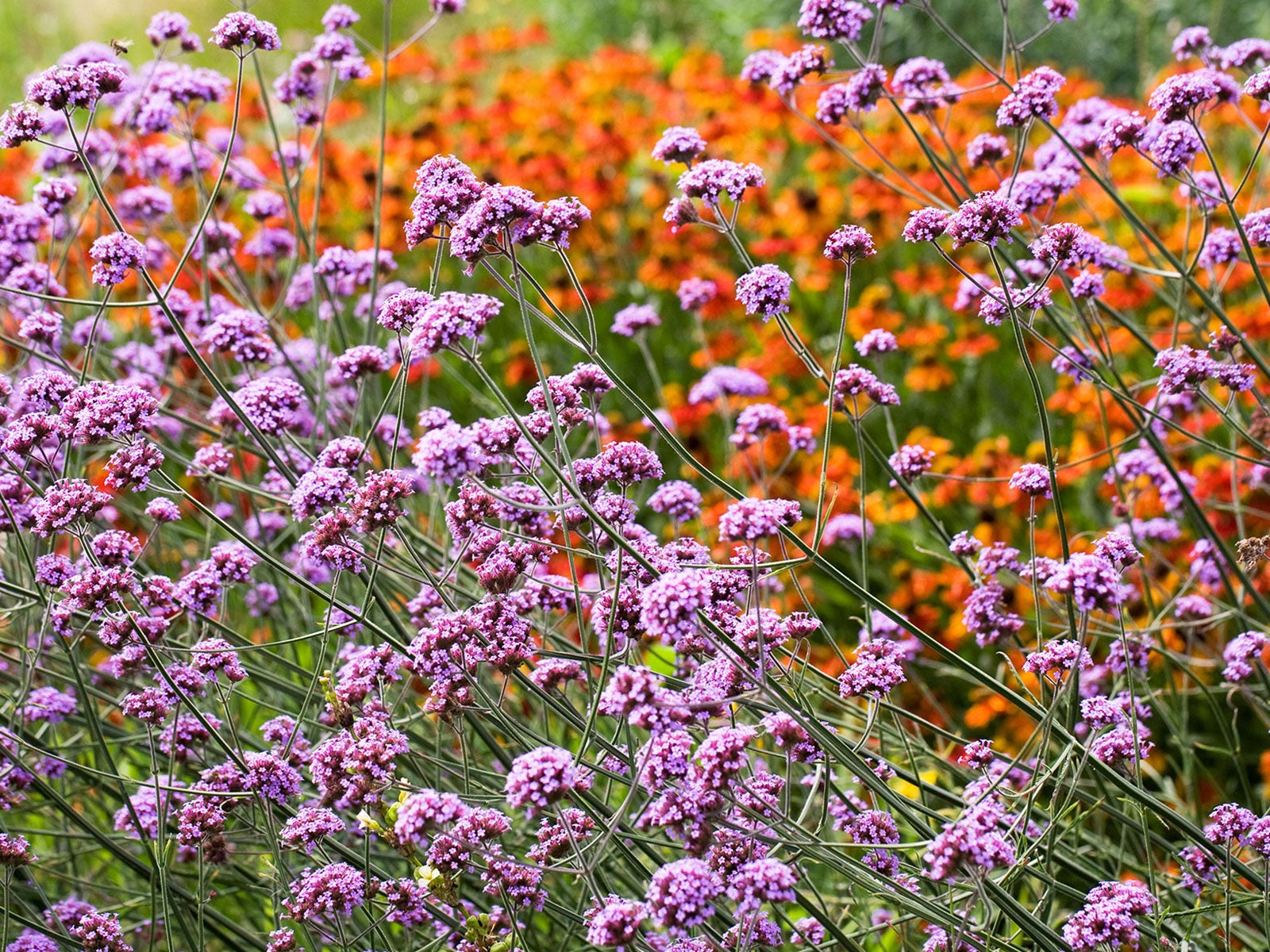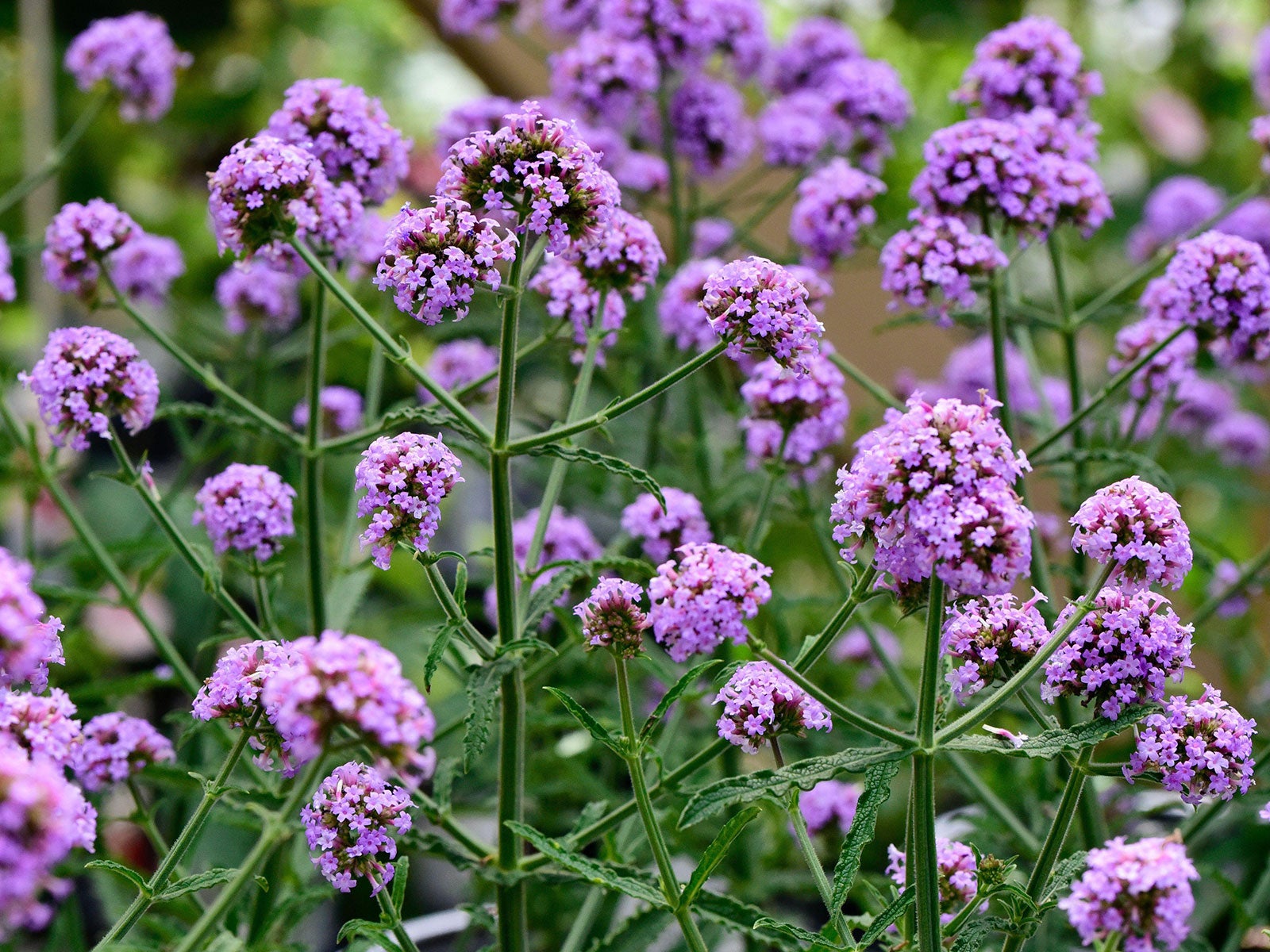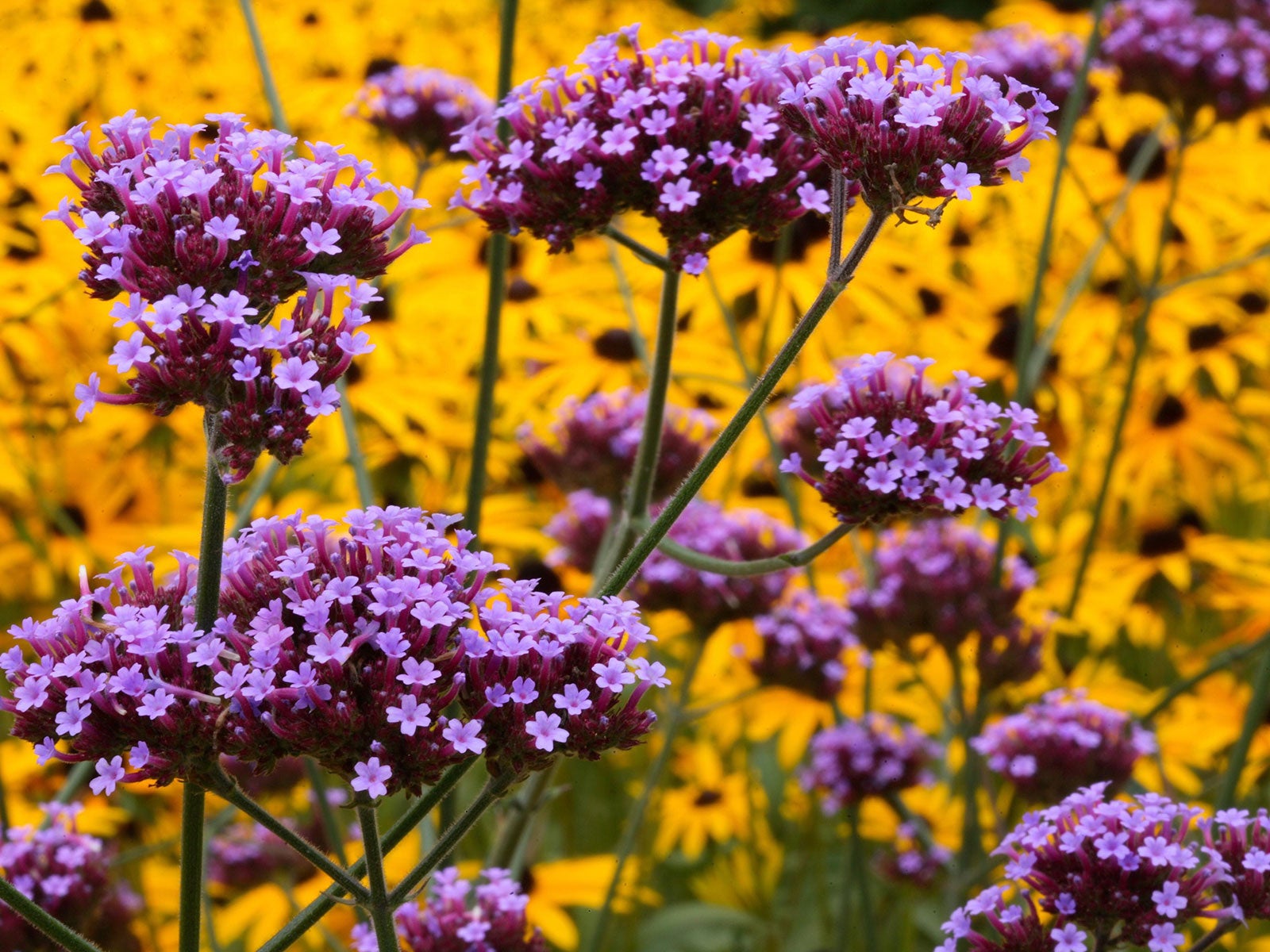Grow Verbena Bonariensis: Expert Guide To Purpletop Vervain (Tall Verbena)


Cultivating Verbena bonariensis gives you a chance to add a top-flight ornamental beauty to your garden. If you crave striking vertical flowers that can hold their own in borders or prairie-style displays, growing these verbena plants guarantees height, structure and drama. They also attract butterflies.
This species of verbena is commonly known as tall verbena, Brazilian verbena and purpletop vervain, thanks to its lofty purple blooms. Native to South America, it grows taller than all other verbenas. Purpletop vervain is an easy-care, tender perennial in milder climates, and an annual in colder regions.
Quick Verbena Facts:
- Botanical name: Verbena bonariensis
- Height: 2 to 5 feet (0.6-1.5m)
- Spread: 1.5 to 3 feet (0.5-0.9m)
- Sun exposure: Full sun
- Soil requirements: Moist, well-drained
- Hardiness zones: USDA 7-11
- When to plant: Spring
Verbena Bonariensis Care
This pretty herbaceous perennial plant produces clusters of small purple flowers on top of long, stiff stems which, despite their height, won’t topple. Verbena bonariensis leaves cluster in a rosette at the base of plants and are minimal on the flowering stems. All in all, tall verbena is reassuringly low maintenance, with minimal care needs. Just follow these essentials for optimum height and flowering.
Best Light
As a mainstay of the late summer garden, Verbena bonariensis requires full sunlight to grow well. Choose a sunny spot, even if temperatures soar. This plant will appreciate all the sunshine you can give it.
Watering
Tall verbena does best with moist soil, but it is drought tolerant. Water a new plant until it establishes strong roots. After that, you only need to water when there is very little rain for extended periods.
Temperature & Humidity
Purpletop vervain is a tender perennial that will not tolerate freezing or frost. Wait until after the last frost date if you wish to plant outside. As it is drought tolerant, it thrives in heat and its humidity needs are low.
Fertilizer
Regular feeding isn’t strictly necessary if you add organic matter to the soil at planting time. You can use a balanced fertilizer a few times throughout the growing season to help tall verbena thrive and bloom.
Gardening tips, videos, info and more delivered right to your inbox!
Sign up for the Gardening Know How newsletter today and receive a free copy of our e-book "How to Grow Delicious Tomatoes".
Soil & Compost
It's best to plant Verbena bonariensis in fertile soil with organic matter. That said, it will tolerate poor soil. Above all, the soil should drain well, because these plants don't like to have wet feet.
Problems, Pests & Diseases
You should find that pests and diseases are uncommon when growing tall verbena. It may be susceptible to powdery mildew, but this rarely causes significant damage or hampers blooming. You can help to prevent this problem by ensuring that plants aren't crowded and have adequate airflow.
How to Grow Purpletop Vervain
You can easily grow tall verbena from seed. For the best results, start your seeds undercover two to three months before the last frost is forecast. Sow seeds in moist seeding mix and keep them in the dark to enable germination. Once verbena germinate, give them light and plenty of moisture. Planting Verbena bonariensis outside is possible after the danger of frost has passed.
Pruning Your Tall Verbena
Relaxed and carefree, purpletop vervain plants are easy to maintain. You won't need to carve out a regular pruning routine to maintain their shape or keep them coming back. Just cut back old growth in early spring as new growth appears. You can deadhead flowers in the autumn, or as often as needed if you aren't collecting seeds.
Propagating Verbena Bonariensis
If you like the sound of growing more tall verbena for free, allow some flowers to stay on the plant and collect the seeds. You should find this is a reliable way of propagating verbena plants for next year's summer displays. If you are hoping to grow it as a perennial, look for volunteer seedlings in spring. You can uproot these and replant them somewhere else. Thin out any volunteers you do not want.

Best Verbena Bonariensis Varieties
While V. bonariensis includes several stunning verbena varieties, you might struggle to find more than one at your local garden center. Still, certain cultivars have been developed that are well worth seeking out with specialist suppliers and online retailers:
- Lollipop – Lollipop is a smaller variety that grows only to about 1.5 feet (0.5m) tall. It’s an ideal verbena option for container growing and compact plots.
- Vanity – Vanity is also a little more compact than other cultivars. It has a bushier growth habit.
- Meteor Shower – This variety gets its name from the abundance of flowers it produces. It does not reseed as readily as other types.
- Finesse – Showy and long flowering, this purpletop vervain variety has feathery leaves which add a textural element to a flower bed.
Verbena Bonariensis Companion Plants
Tall verbena is a pretty plant, but while tall there is a risk it can get overlooked in the wrong crowd, as each plant is thin and airy. The best verbena companion plants either complement its purple tone or provide a strong contrasting color. Plant in masses for more density, and don’t rely on it as a background plant. Choose sympathetic groupings in cottage garden or meadow-style planting schemes:
- Tall groupings – Select giant hyssop, ornamental grasses, tall daylilies or globe thistle.
- Contrasting tones – Choose zingy yellow black-eyed Susan, or pure white Japanese anemone.
- Complementing tones – Try tall cosmos in mixed pinks, or a splash of pink coneflowers.

Frequently Asked Questions
Is Verbena Bonariensis a Perennial or Annual?
Tall verbena is a tender perennial, but depending on your area's hardiness zone, it may only last for one growing season. Purpletop vervain will grow as a perennial in zones 7 and higher. However, if you manage to grow it in colder zones, it will be as an annual.
Is Verbena Bonariensis Invasive?
Where tall verbena is perennial, it can become invasive. It spreads readily by volunteer plants as seeds drop. Check your state and region to find out if it is considered invasive in your area. If you grow it as a perennial, keep tall verbena away from natural areas and pull volunteers as they emerge in spring.

Mary Ellen Ellis has been gardening for over 20 years. With degrees in Chemistry and Biology, Mary Ellen's specialties are flowers, native plants, and herbs.
-
 Zinnias On Repeat: 10 Glorious Cut-And-Come-Again Varieties For Endless Summer Bouquets
Zinnias On Repeat: 10 Glorious Cut-And-Come-Again Varieties For Endless Summer BouquetsThese zinnia varieties keep giving all summer, making them the perfect choice for dedicated cutting gardens – or just the occasional homegrown bouquet.
By Ellen Wells
-
 Create A Romantic Garden Straight Out Of Bridgerton: Regency Era Romance In Your Garden
Create A Romantic Garden Straight Out Of Bridgerton: Regency Era Romance In Your GardenTry some romantic garden ideas straight out of Bridgerton. Flowers and gardens in the Regency era were lush and charming and you can get the same look!
By Bonnie L. Grant